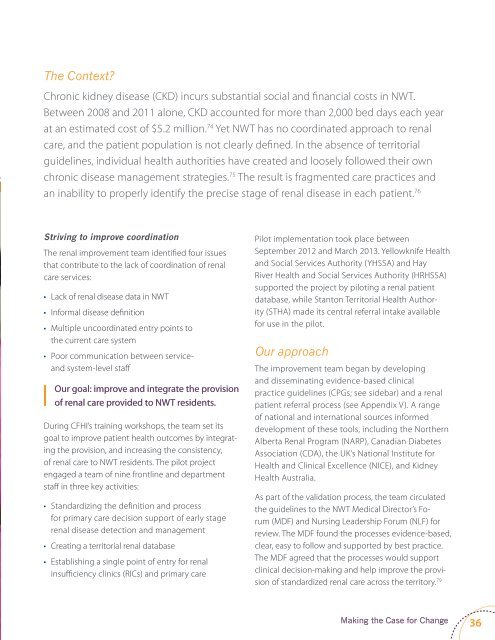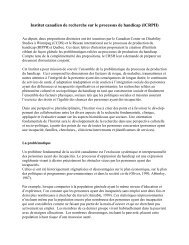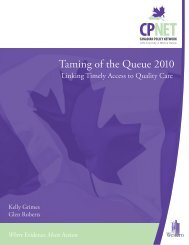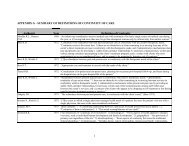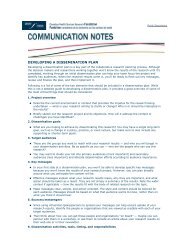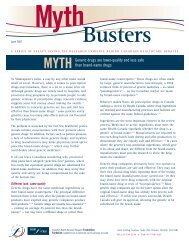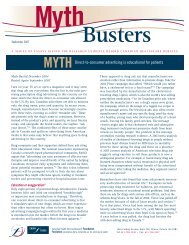Full Report
Full Report
Full Report
Create successful ePaper yourself
Turn your PDF publications into a flip-book with our unique Google optimized e-Paper software.
The Context?<br />
Chronic kidney disease (CKD) incurs substantial social and financial costs in NWT.<br />
Between 2008 and 2011 alone, CKD accounted for more than 2,000 bed days each year<br />
at an estimated cost of $5.2 million. 74 Yet NWT has no coordinated approach to renal<br />
care, and the patient population is not clearly defined. In the absence of territorial<br />
guidelines, individual health authorities have created and loosely followed their own<br />
chronic disease management strategies. 75 The result is fragmented care practices and<br />
an inability to properly identify the precise stage of renal disease in each patient. 76<br />
Striving to improve coordination<br />
The renal improvement team identified four issues<br />
that contribute to the lack of coordination of renal<br />
care services:<br />
• Lack of renal disease data in NWT<br />
• Informal disease definition<br />
• Multiple uncoordinated entry points to<br />
the current care system<br />
• Poor communication between serviceand<br />
system-level staff<br />
Our goal: improve and integrate the provision<br />
of renal care provided to NWT residents.<br />
During CFHI’s training workshops, the team set its<br />
goal to improve patient health outcomes by integrating<br />
the provision, and increasing the consistency,<br />
of renal care to NWT residents. The pilot project<br />
engaged a team of nine frontline and department<br />
staff in three key activities:<br />
• Standardizing the definition and process<br />
for primary care decision support of early stage<br />
renal disease detection and management<br />
• Creating a territorial renal database<br />
• Establishing a single point of entry for renal<br />
insufficiency clinics (RICs) and primary care<br />
Pilot implementation took place between<br />
September 2012 and March 2013. Yellowknife Health<br />
and Social Services Authority (YHSSA) and Hay<br />
River Health and Social Services Authority (HRHSSA)<br />
supported the project by piloting a renal patient<br />
database, while Stanton Territorial Health Authority<br />
(STHA) made its central referral intake available<br />
for use in the pilot.<br />
Our approach<br />
The improvement team began by developing<br />
and disseminating evidence-based clinical<br />
practice guidelines (CPGs; see sidebar) and a renal<br />
patient referral process (see Appendix V). A range<br />
of national and international sources informed<br />
development of these tools, including the Northern<br />
Alberta Renal Program (NARP), Canadian Diabetes<br />
Association (CDA), the UK’s National Institute for<br />
Health and Clinical Excellence (NICE), and Kidney<br />
Health Australia.<br />
As part of the validation process, the team circulated<br />
the guidelines to the NWT Medical Director’s Forum<br />
(MDF) and Nursing Leadership Forum (NLF) for<br />
review. The MDF found the processes evidence-based,<br />
clear, easy to follow and supported by best practice.<br />
The MDF agreed that the processes would support<br />
clinical decision-making and help improve the provision<br />
of standardized renal care across the territory. 79<br />
Making the Case for Change<br />
36


